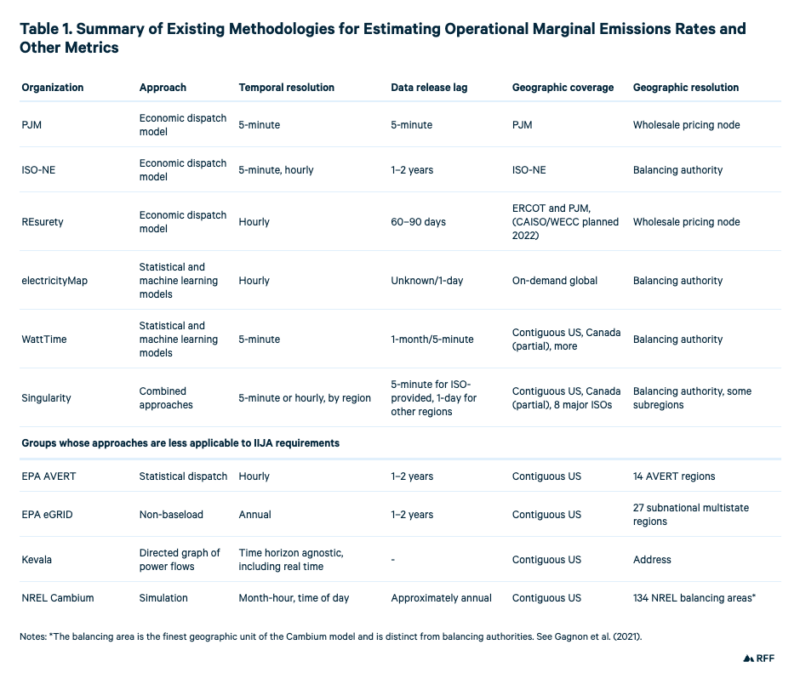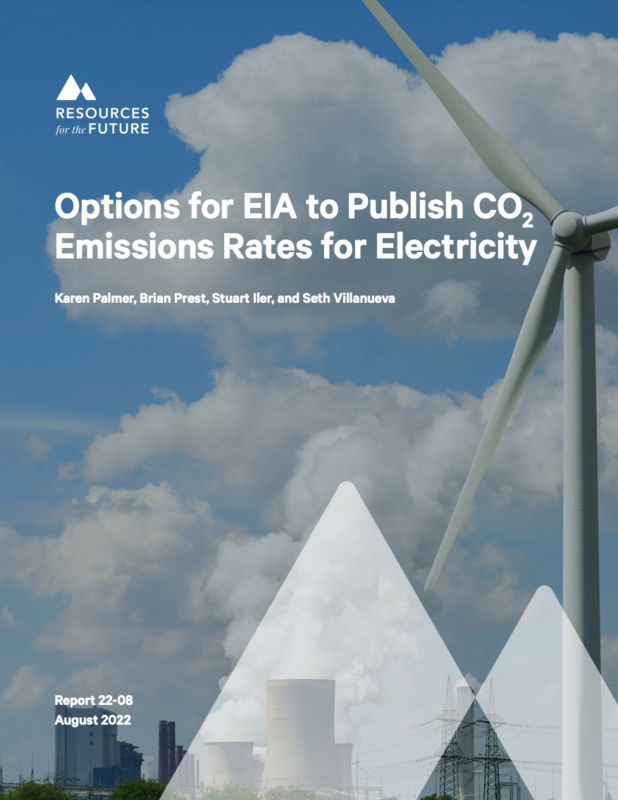The path toward decarbonization in the United States entails not only a mix of federal, state, and local government policies promoting clean energy, but also voluntary efforts by the private actors to reduce their CO2 emissions.
Authored by Karen Palmer, Brian Prest, Stuart Iler, and Seth Villanueva
Resources for the Future reviews use cases for emissions rate data and different options available to the Energy Information Agency for publishing data on both average and marginal emissions rates. Existing methods and data sources, such as REsurety’s Locational Marginal Emissions data, are discussed and evaluated. Read the executive summary excerpt below.
Excerpt:
Decarbonization efforts in the US consist of a mix of government policies to promote clean sources of energy and improve energy efficiency and voluntary actions by private actors to reduce their CO2 emissions. Understanding both the likely and actual benefits of both policies and private actions requires information about the carbon intensity of different sources of energy including electricity. Demand for data on the CO2 intensity of US electricity production and consumption is growing as governments and private companies seek to understand the emissions effects of both their electricity consumption and their clean energy investment choices. Emissions rate information is also important for Scope 2 emissions accounting under the GHG Protocol Corporate Standard1 that provides a way of tracking progress toward clean energy targets that many companies have declared.
The desire for transparent and consistent data on electricity emissions rates led the US Congress, in the Infrastructure Investment and Jobs Act (IIJA), to call for the US Energy Information Administration (EIA) to publish spatially and temporally granular electricity emissions rate data, beginning in late 2022. Specifically, the IIJA calls on EIA to report on hourly operating data, including “where available, the estimated marginal greenhouse gas emissions per megawatt hour of electricity generated” within each balancing authority and by pricing node. The law also calls on EIA to harmonize its electric system operating data with GHG and other relevant data collected by EPA or other federal agencies, as well as data collected by state or renewable energy credit registries. The resulting integrated data set should include net generation data and “where available, the average and marginal greenhouse gas emissions by megawatt hour of electricity generated within the boundaries of each balancing authority,” to be offered on a real-time basis through a publicly accessible application programming interface (API).
Read the full report on Resources for the Future’s website.
Return to the blog post main menu.



